Making peace with food
Feeding young children can be a challenge, but WIC is here to help! Make mealtimes easier with these tips for trying new foods or join your child in exploring colors, shapes, and flavors with these food discovery activities. You can also find answers to common questions about picky eating and learn when to seek additional support.
Make New Foods Fun
Try these kid-approved ways to have fun with food:
- Make a game out of trying new foods. Try taste-testing new foods when your child has friends over.
- Let your child choose a new fruit or vegetable at the grocery store.
- Let your child help you cook meals and snacks. Check out our kid-friendly recipes.
- Cut foods into fun shapes with cookie cutters.
- Use fruit and vegetable slices to make silly food faces.
- Make fun names for food. Name a dish after your child, like “Sasha’s Super Squash” or “Aiden’s Apple Bread.” Broccoli can be “baby trees” and you can encourage your little dinosaur to munch on trees.
- Every now and then, make breakfast for dinner, or have dinner for breakfast for fun and variety.
- Talk about the shapes, colors and smells of food. Help your child learn about where food comes from and how it is grown. Children love gardening activities.
- Children love to dip! Try yogurt, avocado, cheese and other dips as a fun way to encourage your child to eat fruits and vegetables.
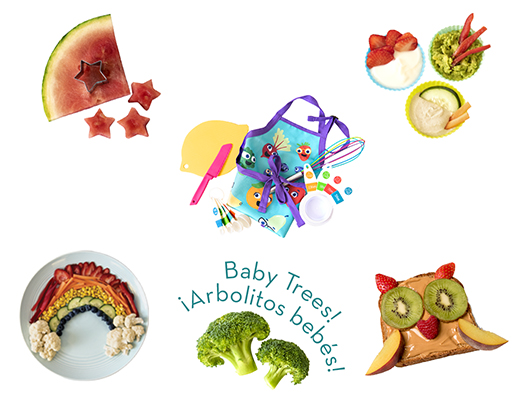
Tips for Trying New Foods
Help your child try new foods by having fun, avoiding pressure and building independence during mealtimes. It’s normal for children to eat more at some meals and less at others. Most children get the nutrients they need over the course of the week. If your child is energetic and growing well, they are most likely getting enough nutrients.
Look through the tips below for ideas to help your child try new foods. Even if your child does not want to eat new foods, simply putting them on their plate and having them touch or smell the new food is a big step in the right direction. With time, your child may begin to try the foods on their plate.
Try, try again
Did you know it can take up to 15 times for a child to try a new food? Stay positive and serve foods in different ways over time to see what your child might enjoy best.
Some children might prefer cooked vegetables over raw ones. Trying new preparations is a great way to increase exposure while learning what your child might like! Take your time and don’t give up—learning to try something new is hard work for children.
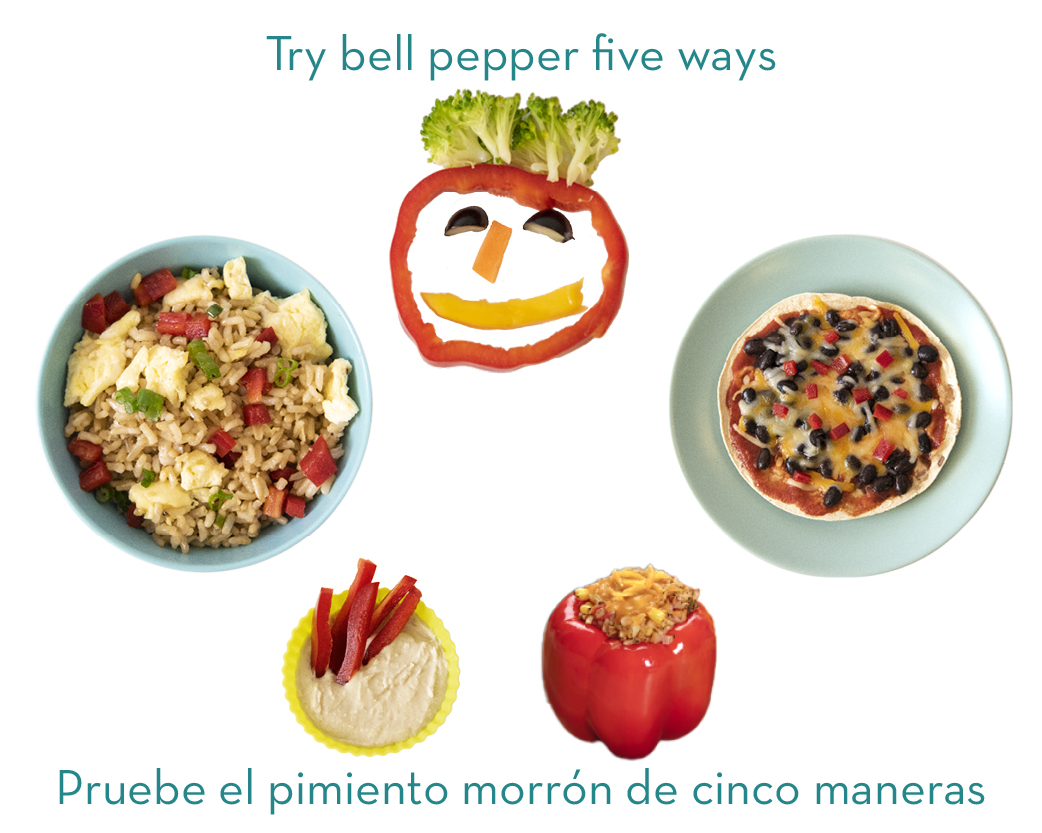
Offer new foods with foods your child likes
There’s nothing scarier for a child than a plate full of food they don’t like! Help your child try something new by including at least one or two foods they like with one new food during mealtimes. Try not to make a big deal out of new foods—let your child decide if and how much they want to eat.
You might think that hiding fruits or vegetables can help “sneak in” important nutrients for your child, but it can make them afraid to try new things and not trust what is being served during mealtimes.
Be sure you always let your child know what’s in their meal to avoid surprises and help them build trust. Let your child see fruits and vegetables in their whole form. If you want to get creative with muffins, sauces or smoothies, let your child help chop and add ingredients. Even if they do not want to taste it, helping to prepare the food is a great way to have a positive experience with something new.
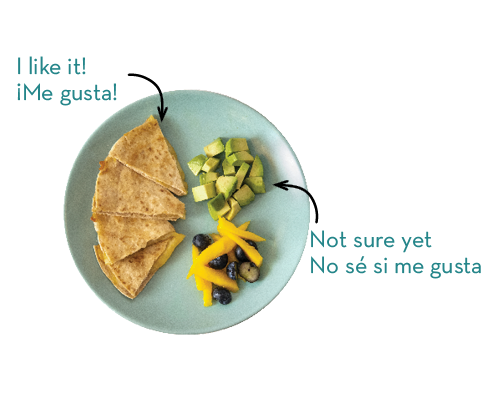
Use positive language
How you talk about your child’s eating habits can help them build confidence. Avoid calling your child a “picky eater” and try these positive phrases instead:
- Exploring new foods.
- Learning to eat new foods.
Learning to try new foods is a developmental journey and children will go at their own pace. Give support to your child while they are learning to eat just as you do while they learn new skills like talking, walking or reading. A small change in words can make a big difference!

Give your child choices
Children are more likely to try new things when they have choices.
- Use colorful plates or utensils and let your child pick their favorite.
- Serve meals family-style and let your child put their food on their plate.
- Let your child choose toppings or offer two food options to pick from.
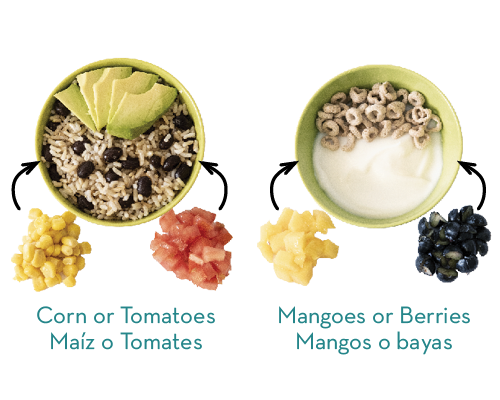
Go beyond the plate
Explore ways you can learn about food beyond the plate! Fun food activities offer a low-pressure way to expose your child to different things. Try coloring activities, reading books or watching fun videos that talk about foods with your child. Let your child explore, play and get messy with food.
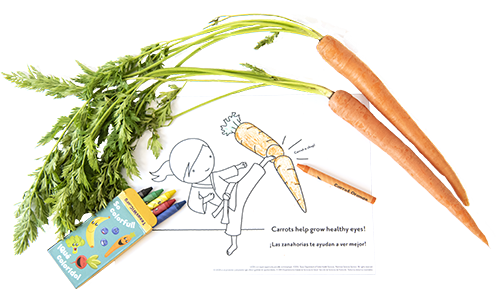
Discover New Foods With WIC
Exploring foods through hands-on activities can help your child be more curious about trying new foods.
The Food Discovery video series inspires families to get creative with food in a low-pressure way. Even if your child only touches the foods in the activity, that counts as an exposure to a new food. The more children see and touch a food, the more likely they are to try it in the future. The most important thing is to keep having fun with your child as you explore new foods together.
Watch all six videos in the Food Discovery Series.
Common Questions
I’m worried. I have tried these tips and my child still won’t eat.
If you have concerns about your child’s eating or feel they have more serious challenges, you may need extra support from a professional with special training in child feeding
More serious picky eating behavior is different than a normal picky eating phase. Here are a few signs your child may need more help:
- Eats less than 20 different foods.
- Refuses to eat or is afraid of eating.
- Is not gaining weight or has lost weight due to poor eating.
- Avoids foods of certain temperature, texture or color.
- Has rigid rules around eating.
- Does not get enough food within a reasonable amount of time.
- Cries, throws tantrums or has inappropriate behavior at mealtimes.
- Does not eat age-appropriate foods.
- Gags when eating certain foods or when using utensils.
Learn more about the difference between normal picky eating and more extreme picky eating behaviors with our lesson, Battle at the Table: Is it Just a Phase?
Expert Advice:
- Follow your instincts and ask for help if something does not feel right.
- Contact your child’s health care provider if you think they are having more extreme picky eating habits, especially if they are losing weight or not gaining weight appropriately.
- Talk to your WIC nutritionist or dietitian about what kind of help is best for your child. WIC can help you find a local health care provider, if needed.
- Keep track of what your child eats and does not eat. This can be very useful to identify what kind of help is best for your child.
- If you have concerns about your child’s development, you can also request an evaluation from Early Childhood Intervention (ECI) or your local public school.





 Have any questions?
Have any questions?
